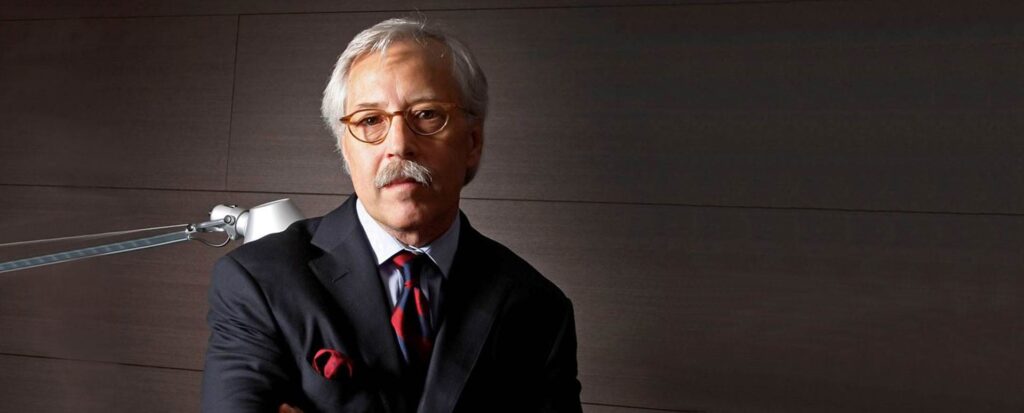
Conducted by Outthinker with the Generous Support of The Haier Management Institute
In January of 2022, Haier contracted Outthinker to initiate a study of Haier’s unique management model, RenDanHeYi, and, more broadly, its concept of the “Ecosystem Brand.” This white paper serves as a document meant to assemble and organize our findings in one place. It is meant for internal purposes and for selective sharing outside of Haier and Outthinker.
Start reading the interactive white paper below or download the PDF.
You can also read our recently published HBR article, “Is Organizational Hierarchy Getting in the Way of Innovation?”

Over the last decade, frustration with traditional bureaucratic organizational models in business has been growing. Acceleration is thrusting traditional organizations rapidly toward a dilemma. Most of them are still primarily run as centrally planned economies. A central authority decides where capital and talent should be deployed; sets salaries; defines how much businesses should pay for internal support like IT, HR, or finance; and so on. When new information is received (“the average salary of database engineers is rising”), it is passed up the hierarchy through memos and meetings, a decision is made (“let’s increase our salaries for database engineers by saving money somewhere else”), and then implemented (new salary bands are set, raises given, recruiting materials updated).

Researchers such as professor Gary Hamel have railed against the negative impacts the hierarchical model implied by bureaucracy implies.1 Hamel has been studying the cost of bureaucracy for decades and concludes that while the world has changed dramatically we continue to hold on to an outdated operating model – the bureaucracy – that companies will need to abandon if they are to survive.
Researchers such as professor Gary Hamel have railed against the negative impacts the hierarchical model implied by bureaucracy implies.2 Hamel has been studying the cost of bureaucracy for decades and concludes that while the world has changed dramatically we continue to hold on to an outdated operating model – the bureaucracy – that companies will need to abandon if they are to survive.
We know how central planning worked out for economies. We are likely to see a similar bifurcation now with companies. Organizations that adapt their model, that abandon the centralized approach, will survive. Those too slow to adapt risk dying.
As we will see in this white paper, an answer is emerging. Forward-looking organizations are adopting a new, more agile organizing principle. They are evolving into ecosystems in which employees have the freedom to spot opportunities, act on them, and rally the resources to pursue them. In other words, we are entering a world that will push us beyond the centralized hierarchical organizational concept that has dominated business organizations for centuries into something new.3
An Outthinker study of the most transformative innovations over recent decades points to the fact that internal innovators working within established organizations have been and continue to be critical drivers of innovation. They have been more significant drivers of societally-important innovation than entrepreneurs have. We owe much of the modern world—from mobile phones to the internet, from MRIs to stents—to their creativity and persistence. Further, all the evidence suggests they are playing an ever-more critical role in shaping the future. Our organizational models should be enabling and encouraging them. Yet, too often we establish “command and control” organizational structures that suppress their entrepreneurial activity.
This suppression comes at a cost. One enormous cost is worker disengagement. Over 80 percent of employees in the U.S. and most developed countries are disengaged at work4, meaning eight out of ten workers spend their work hours just trying to get through the day.
This disengagement costs the U.S. economy about $450 billion per year in lost productivity.5 That is more than the revenues of Amazon, Boeing, GE, and Google combined. That is more than all U.S. companies spend on R&D every year.
And that’s not all. Beyond economics, this is a major humanitarian problem. Disengagement at work has been shown to link to anxiety, depression, and damaged family relationships.
We believe that a major cause of this disengagement stems from the fact that most employees feel their creativity is being suppressed. Is it any wonder so many have lost their sense of purpose or passion? Imagine the growth we could engender if we could reignite that passion. Imagine what we could accomplish as a society if we could reinvigorate that sense of purpose.6
The purpose of this white paper is to explore what an emerging alternative to a centralized organizational bureaucracy might be, focusing particularly on Haier RenDanHeYi model and Ecosystem Brand concept, as this model (as of the writing of this white paper), is the most well-documented and adopted alternative model of which we are aware.


The majority of work conducted to date in this area has served to raise awareness of the problems associated with bureaucratic models. There has been less focus on a clear solution. This is perhaps of little surprise as clear solutions have not, until recently, been evident. Many attempts at finding an alternative have failed or shown flaws.
With no clear alternative model evident, advocates for moving beyond bureaucracy have been relegated to just that: advocating a move away from what is no longer working without having a clear new direction for us to move toward.
We believe that we are now reaching an inflection point. Companies have been experimenting with alternative organizational models and a new winning model is coming into view. We believe that the model that is most advanced and clear as of this writing is that of RenDanHeYi, advocated by Haier.